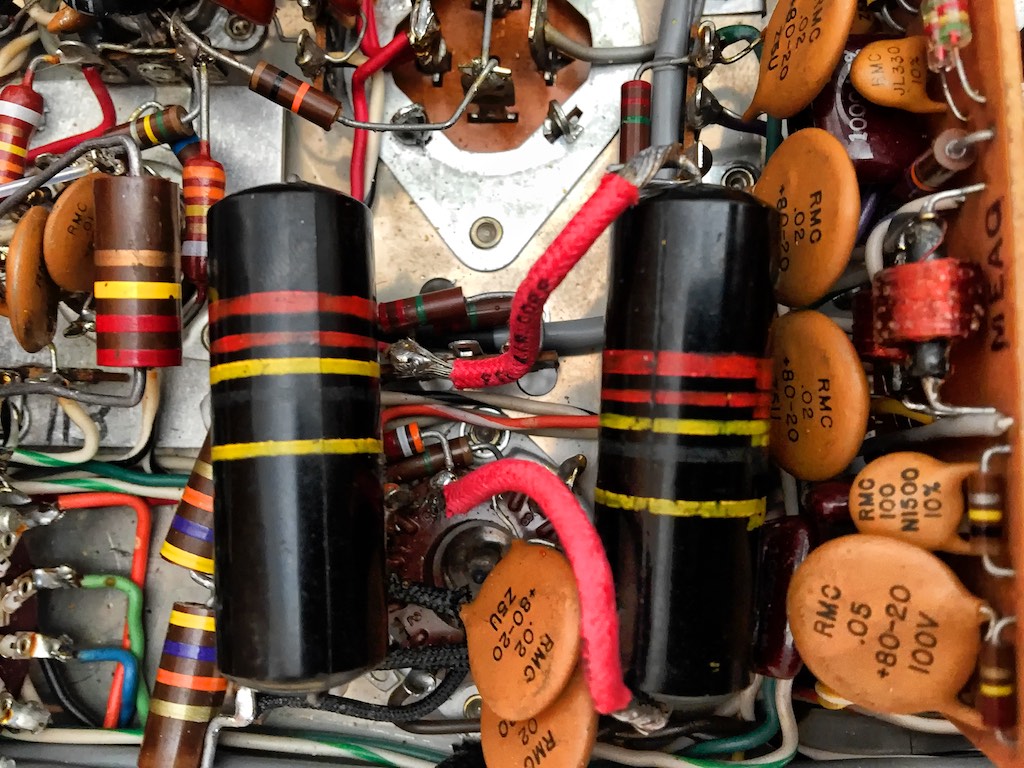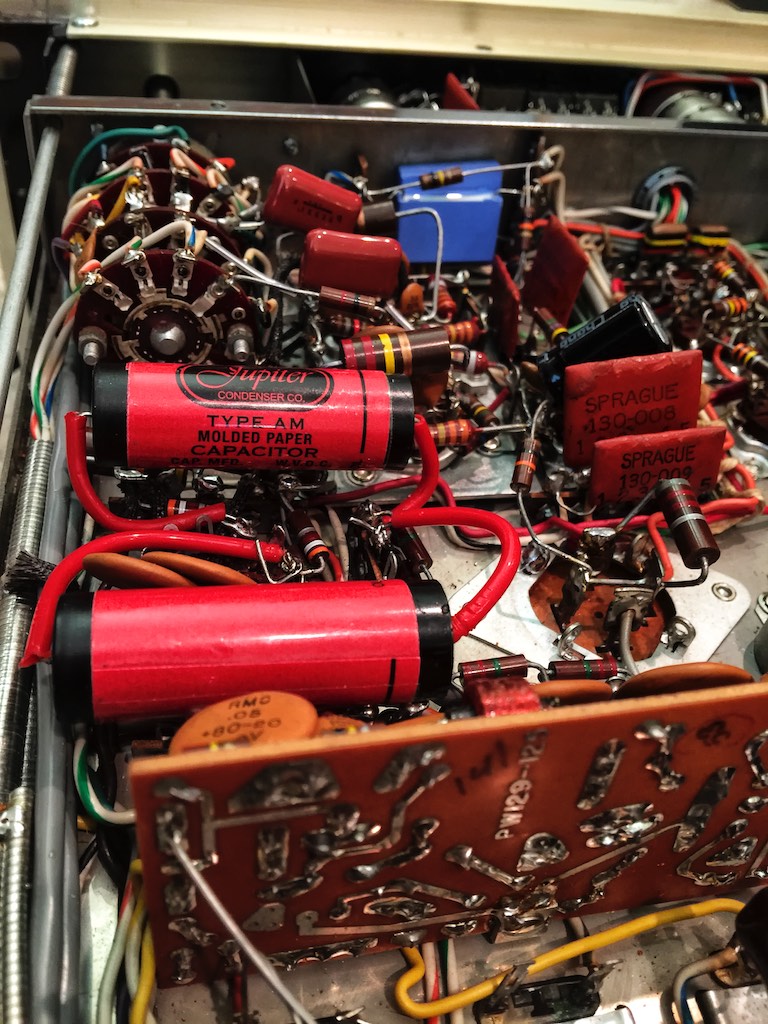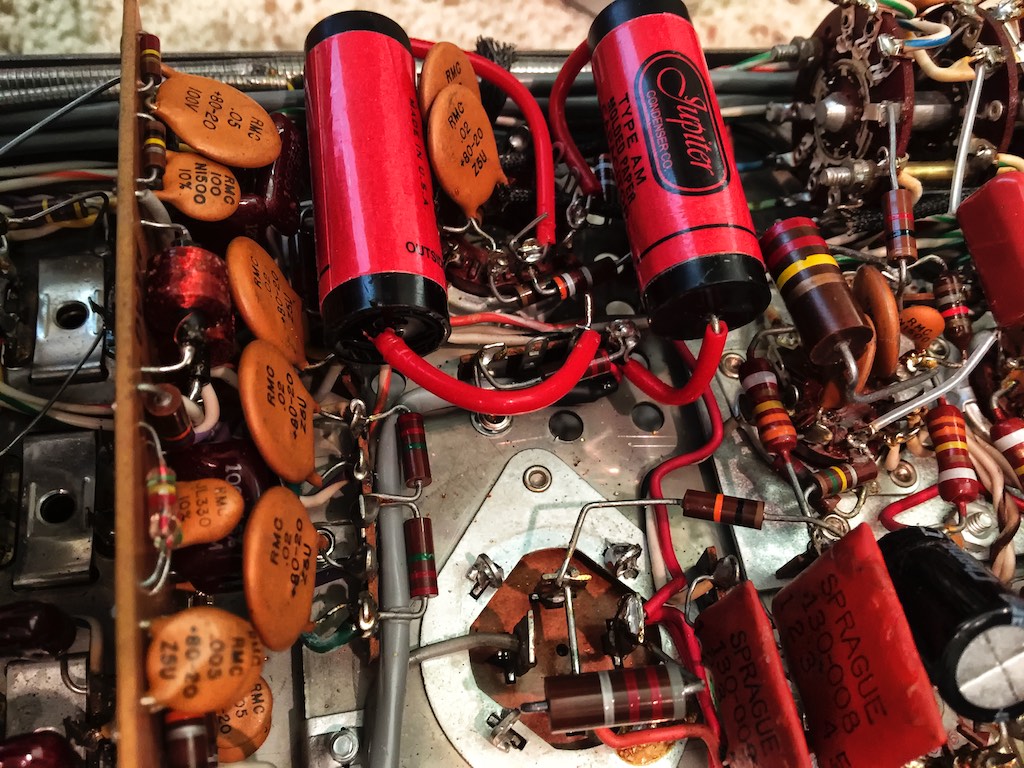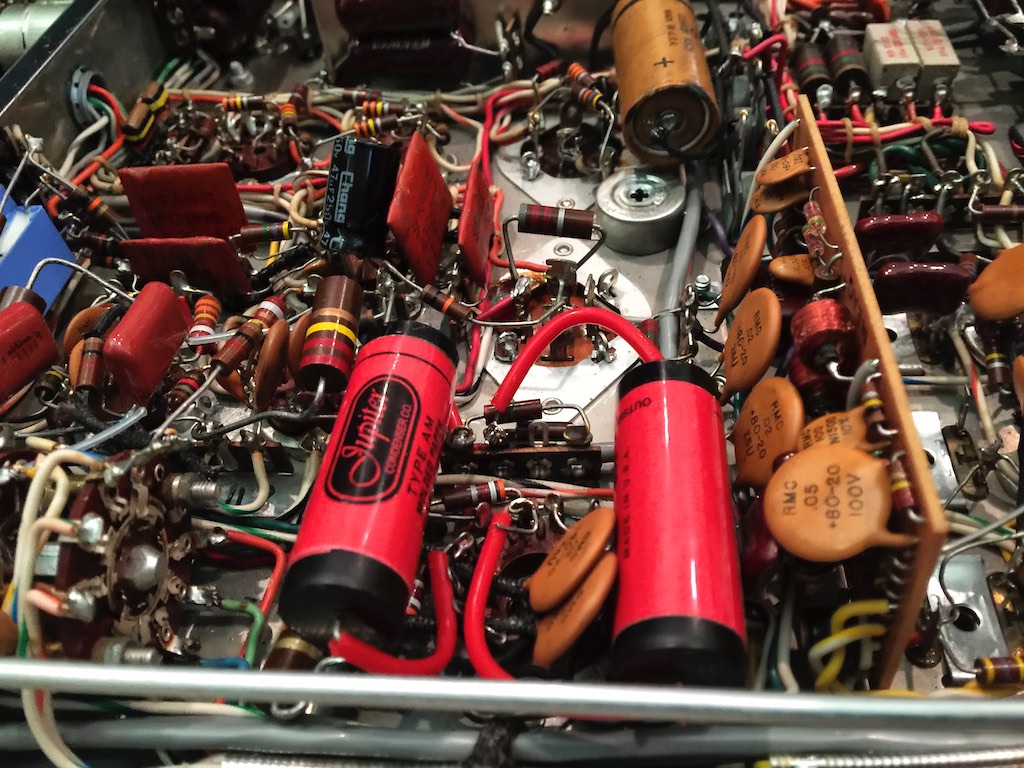I had intended to spend quite a lot more time listening to the gorgeous sounding vintage Sprague Bumblebee 0.22uF capacitors in the C93 & C95 and C94 & C96 positions of my MX110Z to establish a 'baseline' before trying any more capacitors.
The Bumblebee's are my favorites of all the capacitors I've tried in those positions for the MX110Z for their extraordinary combination of sheer musical prowess and great sonics.
The Bumblebee's are smooth, rich, warm, and colorful, they also have a very 'real' presentation of timbral textures, and they excel at portraying tempos, melodies, rhythm, and dynamics.
The Bumblebee's also flatter less than perfect recordings, allowing a lot more recordings to fall into a musical sweet spot, and they provide unparalleled emotional connection to the music.
Many modern capacitors are done audiophile-style, with peaky, hard, and exaggerated highs, which I find unpleasant. I much prefer the smooth, rich, music-lover style of highs the vintage Bumblebee's possess. I sure wish Sprague (or somebody else) would make an exact reproduction of the Black Beauty / Bumblebee series of capacitors for us vintage fans and music lovers.
For my tastes, there's been no current production capacitors that can touch the Bumblebees, and oh do I wish there was! Sprague, are you listening? Please bring back an exact reproduction of the Bumblebee.
I will continue to search for a modern production capacitor that sounds as good as a vintage Sprague Bumblebee that I can recommend to you.
When I read what the guitar guys had said about it, I had hoped that the Jupiter Condenser Red Astron capacitor might be that modern day Bumblebee, with its Mylar & tinfoil construction, and its reputation for being 'warm'.
My curiosity got the best of me, so out came the soldering iron, and I extracted the vintage Bumblebee's, then I installed the Jupiter Condenser Red Astron's in their place at the C93 & C95 and C94 & C96 positions of my MX110Z.
After buttoning the MX110Z back up and installing it back into the system, I let it warm up for a bit then began to play some records of female vocals, which is always a good test of a capacitor's mettle: Rickie Lee Jones' It's Like This and Pop Pop, Joan Baez's Diamonds and Rust in The Bullring, Lucinda Williams' World Without Tears, and so forth.
My first impressions were that the Red Astron's were indeed warm sounding capacitors, with some nice qualities in the midrange, but they didn't have the richness & smoothness in the high-frequencies that the Bumblebee's so easily achieve, sounding a bit edgy and forward in comparison.
I probably should have put the Red Astron's on my Cable Cooker to condition them for a while before dropping them in the MX110Z, but I didn't.
After about 3 hours of vinyl listening time the Red Astron's started to smooth out and I was starting to hear what the guitar guys were talking about. These are really good capacitors, and wait until you hear electric guitars with them in the circuit! Incredible!
The Red Astron's are moving towards having a level of warmth & naturalness somewhat comparable to the vintage Bumblebee's, but they are more transparent & resolving from bottom-to-top, and their highs are starting to smooth out in a way that is very appealing. The highs aren't perfect, but they've improved drastically with just 3 hours of play time, so that bodes well.
From an audiophile-style sonic standpoint, the Red Astron's throw an enormous sense of space that has a rather impressive 'fill the room' presence. The Red Astron's have a similar illuminating effect on imaging that I hear from directly-heated single-ended-triode amplifiers (DH-SET), giving images a vivid lit-from-within glowing presence, so you SET guys & gals are going to like these I suspect. I found this 'lit from within' aspect of their performance a bit surprising, but nice, and I hope it doesn't disappear as the continue to get run-in time on them.
The Red Astron's are more resolving than my half-century old vintage Bumblebee's, but not in any sort of negative overtly analytical way, Rather, they come across as mostly natural & organic, but you can hear more details and subtleties.

Vintage McIntosh electronics and Altec A5 Voice of Theatre loudspeakers for an awesome vintage musical experience. They got it right.
I've been listening to rock & roll - Simon and Garfunkel's The Concert In Central Park, CSNY's Déjà vu, Paul McCartney's Unplugged, etc. - and I am impressed with how I can crank up the volume to loud rock-like levels and still have everything hang together well, without becoming harsh, shouty, or otherwise amusical.
I am becoming more & more impressed with each album I listen to on my vintage McIntosh and Altec A5 Voice of the Theatre combo, as these Red Astron capacitors provide a compelling take on their vintage tone and let its goodness shine on through.
The Red Astron's have continued to improve, now with about 5 hours on them, their sonic & musical performance has revealed them to be very fine capacitors indeed, although not yet exceeding the beguiling combination of sonics & musicality that my vintage Bumblebee's so easily achieve.
For example, brass doesn't sound as natural as it does with the Bumblebees, there's a bit more edge to it than I think there should be, but they're hugely better than when I first fired them up. It will be interesting to see how that aspect of their performance continues (hopefully) to improve with more time on them.
Even in this very short amount of time the Red Astron's have revealed themselves to be very fine capacitors. I'll check back in to let you know how they are performing as they get about 100 hours on them, which is my normal benchmark for full tonal development, but so far I'd say they are a pretty safe recommendation if tone is what you're after.
The Red Astron's may not yet be better the vintage Bumblebee's in every way, but they do better them in some ways, and if they continue to improve at the rate they have initially, then who knows?
But for now the Bumblebees are still king in my MX110Z, but there's someone knockin' on the door.


































